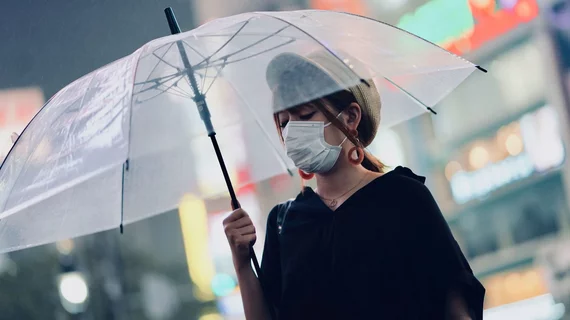New research from China clarifies clinical harms, risks of coronavirus
Some patients infected with coronavirus initially have atypical symptoms, and hospitals that fail to quickly quarantine the stricken are at high risk of having the disease proliferate within their walls.
Those are among the conclusions to be drawn from research conducted at an academic medical center in Wuhan, China—the epicenter of the unfolding global health scare—and published online in JAMA Feb. 7.
Dawei Wang, MD, and colleagues at Zhongnan Hospital of Wuhan University evaluated 138 patients hospitalized with coronavirus at their institution from January 1 to Feb. 3.
Among the team’s key findings were that around 10% of the 138 first presented with digestive troubles rather than fever and cough.
More striking still, 41% seemed to have become infected within the hospital—and many of these were healthcare workers. In fact, a patient who was admitted for suspected abdominal issues ended up having coronavirus and passing it to at least 10 healthcare workers and four other patients.
About a quarter of the study group, mostly older patients with preexisting conditions, received intensive care. Their median age was 66 versus 51 for those who weren’t sent to the ICU.
Overall mortality was 4.3% (six patients).
Other noteworthy findings included:
- Patients discharged by the end of the study period (n = 47) averaged 10 days in the hospital.
- Common initial symptoms across the study group included fever, dry cough, myalgia, fatigue, dyspnea and anorexia. However, the authors note, “a significant proportion of patients presented initially with atypical symptoms, such as diarrhea and nausea.”
- Major complications during hospitalization included acute respiratory distress syndrome, arrhythmia and shock.
- Most patients required some oxygen therapy, with several needing invasive ventilation or even more aggressive respiratory intervention.
Among the limitations Wang et al. acknowledge were that the cases of hospital-based transmission were strongly suspected but not clinically validated and that most of the 138 patients were still hospitalized when the authors prepared their manuscript.
“Therefore, it is difficult to assess risk factors for poor outcome, and continued observations of the natural history of the disease are needed,” they write.
JAMA also published a small study from China Feb. 7. Researchers analyzed the cases of 13 coronavirus patients in three Beijing hospitals and reported no fatalities and less severe illness than that seen in Wuhan.

